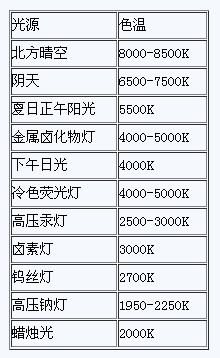To understand LEDs in depth, you need to understand not only some basic knowledge of LEDs, but also the performance of LEDs, because LED performance indicators are the core of the entire LED. The author divides the LED performance index into 12 keywords. Let the author give a detailed analysis to the netizens.
12 LED important performance indicators
(1) LED color: The color of LED is a very important indicator. Every LED related lighting product must be marked. At present, the color of LED mainly includes red, green, blue, cyan, yellow, white, warm white. Amber and so on. This parameter must not be forgotten when we design and order (especially for beginners). Because of the different colors, the relevant parameters also vary greatly.
(B) LED current: LED forward limit (IF) current is more than 20MA, and LED Light decay current can not be greater than IF / 3, about 15MA and 18MA. The luminous intensity of the LED is only proportional to the IF within a certain range. When IF>20MA, the enhancement of the brightness cannot be separated by the inner eye. Therefore, the operating current of the LED is generally chosen to be around 17-19MA. The front is aimed at the LED between the ordinary low-power LED (0.04-0.08W), except for some piranha LEDs (some are rated at around 40MA). value).
In addition to the continuous development of technology, high-power LEDs are constantly appearing such as 0.5WLED (IF=150MA), 1WLED (IF=350MA), 3WLED (IF=750MA) and many more specifications. I will not introduce them one by one. You can check the LED manual yourself.
(3) LED voltage: Generally speaking, the LED is a forward voltage, that is, the positive pole of the LED is connected to the positive pole of the power supply, and the negative pole is connected to the negative pole of the power supply. The voltage is related to the color. The voltage of red, yellow and yellow green is between 1.8 and 2.4V. The voltages of white, blue and emerald green are between 3.0 and 3.6v. Here, I would like to remind you that there will be some differences in the LED voltage produced in the same batch. According to the manufacturer's specifications, when the external temperature rises, VF will drop.
(4) Reverse voltage of LED VRm: Maximum reverse voltage allowed to increase. Above the value, the LED may be damaged by breakdown.
(5) The color temperature of the LED: expressed by the absolute temperature K, which is a standard black body heating. When the temperature rises to a certain extent, the color begins to change from deep red to light red-orange-white-blue, and a certain light source and black body When the colors are the same, the absolute temperature of the black body at that time is called the color temperature of the light source.
Since the correlated color temperature is actually the black body radiation approaching the light source color, the evaluation value of the light source color performance is not an accurate color contrast, so the two light sources with the same color temperature value may still be in the light color appearance. There are some differences. Color temperature alone cannot understand the color rendering ability of the light source to the object, or how the color of the object is reproduced under the light source.
